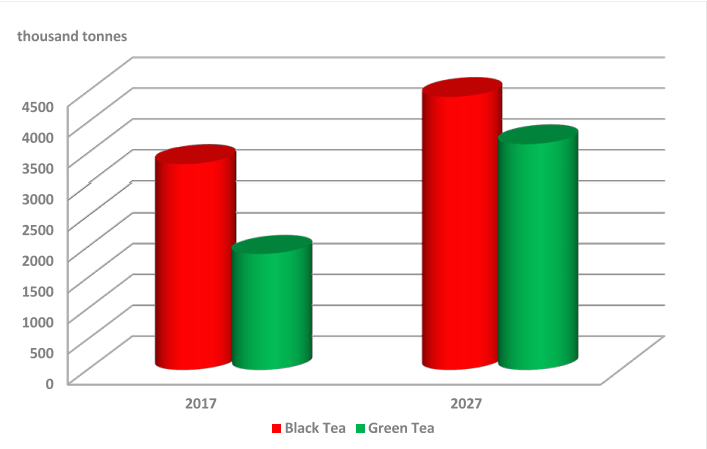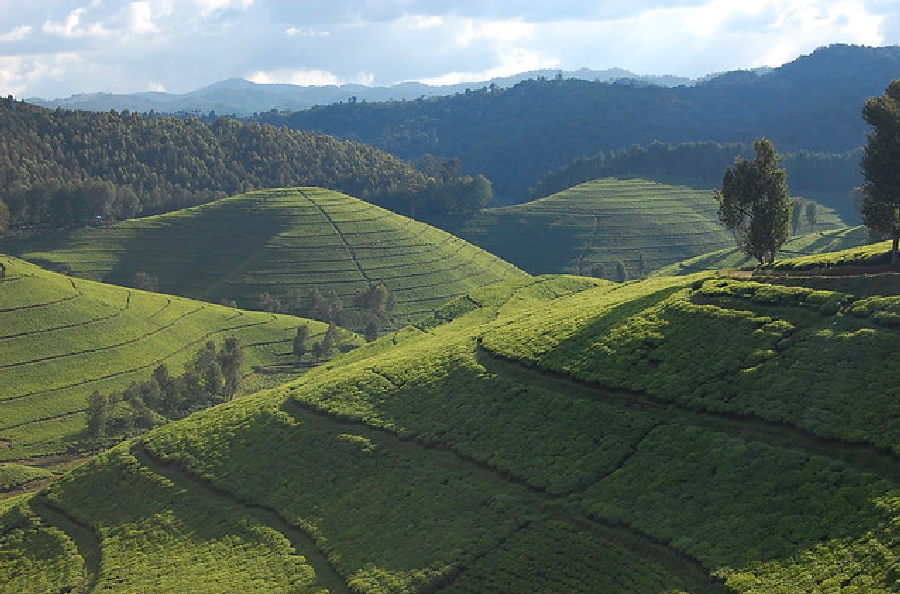Rwandan theiculture in three key points
Published at the beginning of this month, the latest figures for Rwandan tea exports confirm the good health of this sector, which is now the leading agricultural export sector in the country of the Thousand Hills. Ressources offers you an overview of the sector in three key points.
Quality tea
Established since the 1950s, Rwandan tea growing is world-renowned for the quality of its production, with teas from the land of the Thousand Hills regularly winning international awards. The fourth African Tea Convention and Exhibition, held in Kampala, Uganda, at the end of June 2019, confirmed this superiority: despite competition from all over the continent (Uganda, Kenya, Burundi, Madagascar…), all five prizes awarded by the jury were won by Rwandan products. This excellence owes much to local pedoclimatic conditions, « ideal in many ways for tea production, » explains Emmanuel Hafashimana, a specialist in the sector and author of a study on the subject for the United Nations Food and Agriculture Organization (FAO). A moist climate, sufficient sunshine, air humidity between 70 and 90%, abundant and regular rainfall all year round (up to 3,000 mm/year)… These are all favourable factors that justify the extra premium granted to Rwandan teas on international markets. In Mombasa, the nerve centre of the sector for the whole of East Africa ($1.5 billion transactions/year), the prices of the best tea products from the country of the Thousand Hills periodically reach record highs at auction: « Up to $7.22 - a record - per kilo for a tea from the Rwandan Nyabihu plantations [north-western Rwanda], » notes Shyaka Helmenegilde, the national coordinator of FERWACOTHE, the Federation of Tea Producers’ Cooperatives of Rwanda. A level that is out of all proportion to the rest of the market. As data published by the East African Tea Trade Association (EATTA) show, in 2019, average selling prices in Mombasa ranged from $2 to $3 per kilo.
Strong growth in demand…
Even better: beyond the flattering reputation accorded to Rwandan tea - over 95% of which is exported - demand for it continues to grow. Published in early January by the National Agricultural Export Development Board (NAEB), the Rwandan state agency in charge of developing agricultural exports, the latest figures for Rwandan tea exports confirm the good health of the sector. Between July and November 2019, the value of green gold sales abroad thus increased by 8% to reach more than 33.2 billion Rwandan francs (36 million dollars), compared to 30.8 billion Rwandan francs (more than 33.5 million dollars) over the same period the previous year, says the Rwandan structure, which estimates total tea export earnings for the 2018/2019 campaign at 83 million dollars. As for the volumes exported, they increased by 10%, from 27 000 to 30 000 tonnes. This is a doubling since 2000, when the tonnage exported was 14 500 tonnes (and export earnings were $2.6 million, 32 times less than today). And according to the latest projections by the FAO, which expects world demand for tea to continue to grow over the next seven years (+2.2% per year until 2027 for black tea and +7.5% for green tea) - particularly in Africa, thanks to improvements in the standard of living of certain categories of population - this strong upward trend is not likely to stop any time soon.

… but limited potential for progression
However, despite the continuous increase in volumes produced since the end of the 1990s, made possible among other things by the modernization of facilities, land consolidation and the grouping of farmers into cooperatives (which notably allows them to benefit from economies of scale), « the weight of the Rwandan tea sector remains minimal compared to its Ugandan and especially Kenyan neighbours, » acknowledges Shyaka Helmenegilde. Third largest producer - behind China and India - and the world’s leading exporter, Kenya produces 15 times more tea than Rwanda (475,000 tonnes compared to 30,000)! In fact, the small size and extreme population density of the Thousand Hills country (26,338 km2 and 460 inhabitants/km2) limit the exploitable agricultural surface (only 27,100 hectares of tea cultivation in 2018), the potential pool of jobs (42,000 tea growers counted in 2018, i.e. barely 1% of the country’s total agricultural workforce) and, in fine, the possible margin for progress.

A « Little Thumb » situation that the Rwandan authorities have perfectly integrated. In order to make the most of the country’s particular configuration, public authorities and private operators are therefore taking the gamble of moving upmarket. According to Emmanuel Hafashimana, this approach should « lead Rwandan tea to establish a production niche on the world market, through the specification of its offer, which will include a process of labeling associated with the terroir ». A major challenge, « but achievable » wants for its part to believe Shyaka Helmenegilde, who recalls that the country of the Thousand Hills aims to become « an African leader in all services with high added value » (finance, ICT, leisure, tourism …). The success of the tea sector would then be only the agricultural counterpart of Rwanda’s more global economic success story.
